Archive for January, 2011
Liisa Kallio: Pikku Papu [Little Papu]
31 January 2011 | Mini reviews, Reviews
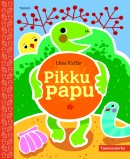 Pikku Papu
Pikku Papu
[Little Papu]
Kuvitus [Ill. by]: Liisa Kallio
Helsinki: Tammi, 2010. 31 p.
ISBN 978-951-31-5242-0
€10.30, hardback
In 2009, Finnish publisher Tammi launched its Tammenterho (‘Acorn’) series of picture books written by established Finnish authors to run along its Tammen Kultaiset kirjat (Tammi Golden Books series, modelled after a US imprint dating back to the 1940s). Pikku Papu is a jolly wandering tale for the smallest children. Papu the Tortoise notices that his shell, which he left on the beach while he went for a swim, has shrunk. In his search for a solution to his problem, he encounters a number of animals. Papu tries to cover himself with a glove he finds on the beach, but it proves to be too warm, and an eggshell he is given by a bird cracks. Fortunately, of course, everything works out in the end. This gentle story lets children identify colours and shapes and recognise various animals. The collage illustrations are attractive, and the text is simple, calmly told and appropriately short.
Translated by Ruth Urbom
Tapani Bagge: Maalla [In the country]
31 January 2011 | Mini reviews, Reviews
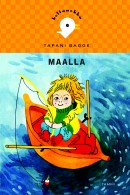 Maalla
Maalla
[In the country]
Kuvitus [ill. by]: Hannamari Ruohonen
Helsinki: Tammi, 2010. 64 p.
ISBN 978-951-31-4748-8
€9.50, hardback
There have been plenty of books for beginning readers with action-packed plots full of breathtaking twists and turns. Fortunately there are still books that leave room for a more ‘easy does it’ reading style. One of them is this, the sixth title in Tapani Bagge’s series about a girl called Kaisa. Kaisa travels to the countryside with her father and her father’s partner Sirkka. Their journey is overshadowed by the death of Kaisa’s grandmother, and the little girl believes that nothing at her grandma’s place will ever be the same again. Bagge’s extensive work on this material is evident in his spare, finely tuned prose. He portrays the grieving girl’s differing shades of emotion beautifully. Kaisa believes that her grandma has changed into a butterfly following her death. So the butterfly fluttering around in the attic needs to be saved – but this of course has further-reaching consequences…. Hannamari Ruohonen’s black-and-white illustrations provide a lovely depiction of care and protection in the family.
Translated by Ruth Urbom
Growing together. New Finnish children’s books
28 January 2011 | Articles

Hulda knows what she wants! From the cover of a new picture book by Markus Majaluoma (see mini reviews*)
What to choose? A mum or dad buys a book hoping it will be an enjoyable read at bedtime – adults presume a book is a ‘good’ one if they themselves genuinely enjoy it, but children’s opinions may differ. Päivi Heikkilä-Halttunen reviews the trends in children’s literature published in Finland in 2010, and in the review section we’ve picked out a handful of the best on offer
Judging by the sheer number and variety of titles published, Finnish children’s and young people’s fiction is alive and well. If I had to describe the selection of books published in 2010 in just a few words, I would have to point to the abundance of titles and subject matters, and the awareness of international trends.
Since 2000 the number of books for children and young people published in Finland each year – including both translated and Finnish titles – has been well in excess of 1,500, and increasing, and this growth shows no signs of slowing down.
Little boys, ten-year-olds who don’t read very much and teenage boys, however, were paid very little attention last year. Although gender-specificity has never been a requirement of children’s fiction, boys are notably pickier when it comes to long, wordy books, especially those that might be considered ‘girly’. More…
Maria Turtschaninoff: Underfors [Underville]
28 January 2011 | Mini reviews, Reviews
 Underfors
Underfors
[Underville]
Helsingfors: Söderströms, 2010. 342 p.
ISBN 978-951-52-2739-3
€16 , hardback
This highly original fantasy novel by the Swedish-speaking author Maria Turtschaninoff (born 1977) is evidence of the innovative thinking that Finnish authors for young people bring to the international fantasy genre, particularly the currently fashionable vampire and werewolf themes associated with the borderline between life and death. The protagonist, Alva, is an adopted teenage girl who has some black holes in her memory of early childhood. A young man called Nide leads Alva to a land situated beneath Helsinki, where Alva learns that she is the heir to the shadow king. This novel is teeming with goblins, sprites, kelpies, pixies and sorceresses. Events come to a head on Midsummer Night, when magic spells can come true. Underfors is a classic story of a person’s search for her identity: Alva constructs her shattered self using fragments she finds from her past. She is liberated from guilt, longing and her inexplicable anguish, but becoming free requires sacrifices and struggles with ethical issues.
Translated by Ruth Urbom
Riitta Jalonen & Kristiina Louhi: Aatos ja Sofia [Aatos and Sofia]
28 January 2011 | Mini reviews, Reviews
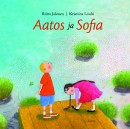 Aatos ja Sofia
Aatos ja Sofia
[Aatos and Sofia]
Kuvitus [ill. by]: Kristiina Louhi
Helsinki: Tammi, 2010. 36 p.
ISBN 978-951-31-5240-6
€14.30, hardback
Riitta Jalonen (born 1954) writes books for children and adults with the same emotional intensity. This picture book throws readers in alongside two children, Aatos and Sofia, to play in a sandpit. Aatos (or ‘Thought’, in Finnish) is a bit of a dreamer, while Sofia, who is slightly older, takes a more practical approach to life. As in her Tyttö (‘Girl’) trilogy, Riitta Jalonen uses an impressionistic mode of storytelling. Through a selection of brief, random scenes, Aatos ja Sofia tells the deeply personal story of a little boy’s fondness for his playmate. Kristiina Louhi’s bold, broad-brush illustrations have an almost hypnotic effect on the reader.
Translated by Ruth Urbom
Siri Kolu: Me Rosvolat [Me and the Robbersons]
27 January 2011 | Mini reviews, Reviews
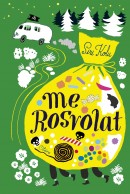 Me Rosvolat
Me Rosvolat
[Me and the Robbersons]
Kuvitus [ill. by]: Tuuli Juusela
Helsinki: Otava, 2010. 222 p.
ISBN 978-951-1-24393-9
€13.80, hardback
Me Rosvolat by Siri Kolu (born 1972), winner of the Finlandia Junior prize, is a clever combination of the spirit of the Norwegian children’s classic When the robbers came to Cardamom Town by Thorbjørn Egner and the fashionable road movie genre. A ramshackle gang of robbers kidnaps ten-year-old Vilja, who is in the middle of a holiday with her family. The Robbersons like to pounce, Robin Hood-like, on petty bourgeois types who ‘think they’re just regular people, but who’ve got plenty of nice things, like a car, good eats and clothes.’ In a carnival style that appeals to children’s sense of justice – and is reminiscent of Astrid Lindgren’s Pippi Longstocking – Kolu describes the Robberson family’s innocent-seeming raids on kiosks selling old-fashioned treats and the pick ‘n’ mix sections of video rental shops. Vilja and the Robberson family’s summer-long jaunt is filled with humour, sticky situations and thoughts on family relationships.
Translated by Ruth Urbom
Markus Majaluoma: Hulda kulta, luetaan iltasatu! [Hulda dear, let’s read a bedtime story!]
27 January 2011 | Mini reviews, Reviews
 Hulda kulta, luetaan iltasatu!
Hulda kulta, luetaan iltasatu!
[Hulda dear, let’s read a bedtime story!]
Helsinki: WSOY, 2010. 24 p., ill.
ISBN 978-951-0-36284-6
€ 23.20, hardback
Since 1996, illustrator Markus Majaluoma (born 1961) has written and illustrated 17 children’s books. His picture books have been translated into six languages. In this, the third book of its series, Jalmari reads a bedtime story chosen by his strong-willed baby daughter Hulda – one that they’ve read a hundred times before, children being famously conservative in this regard. In the story, a wasp stings a bear. Jalmari falls asleep, but as clever little Hulda knows how the story ends, there will be a surprise for the snoring dad. The stripped-down little narrative is fleshed out with plenty of details in Majaluoma’s highly original illustrations (the wasp playfully stings with its snout) often standing in humorous counterpoint to the text, an amusing bonus for the adult reading it as a bedtime story.
Translated by Ruth Urbom
Serial fun, or comics celebrated
24 January 2011 | In the news
The art of comics celebrates its first centenary in Finland this year. The first Finnish picture story was a book called Professori Itikaisen tutkimusretki (‘Professor Itikainen’s expedition’, WSOY), by Ilmari Vainio, published in 1911; see our post on the Books from Finland website.
By the way, comics in Finnish is sarjakuva, ‘serial picture’, covering the modern usage of ‘comics’ – including serious, graphically impressive stuff such as the newish genre of the graphic novel.
The annual Helsinki Comics Festival, organised by Finnish Comics Society (founded 1971), is the biggest event in the field in northern Europe; this year’s festival will take place in September. In 2011 comics exhibitions will take place at the Finnish Design Museum, the Finnish Post Museum and the National Library of Finland.

Tommi Musturi. Photo: the Finnish Comics Society
The Society awarded its Puupää prize 2011 to Tommi Musturi (born 1975) – take a look at an extract from his Walking with Samuel which we ran on the Books from Finland website in May 2010.
Among Musturi’s publications are ten anthologies entitled Glömp; he has also worked for Kuti magazine and Huuda Huuda publisher. The jury remarked, in particular, on their appreciation of Musturi’s highly original, often wordless, stories and their graphic brilliance.

The prize: Puupää's hat
The prize is not money but a honorary hat, and is named after a classic Finnish cartoon character, Pekka Puupää (‘Pete Blockhead’), created by Ola Fogelberg and his daughter Toto. The Puupää comic books were published between 1925 and 1975, and some of the stories were made into film.
Vieraita työssä. Työelämän etnistyvä eriarvoisuus [Foreign workforce. Increasingly ethnic inequality in working life]
21 January 2011 | Mini reviews, Reviews
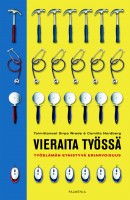 Vieraita työssä. Työelämän etnistyvä eriarvoisuus
Vieraita työssä. Työelämän etnistyvä eriarvoisuus
[Foreign workforce. Increasingly ethnic inequality in working life]
Toim. [Editors]: Sirpa Wrede & Camilla Nordberg
Helsinki: Gaudeamus, 2010. 285 p.
ISBN 978-951-570-776-5
€20, paperback
There has been a great deal of discussion in Finland about whether educated people should be recruited from abroad for high-level positions, and whether immigrants with lower levels of education could redress the labour shortage in low-paid fields. In this collection of twelve scholarly articles, sociologists have situated immigrants into the field of research into the workplace. This book seeks answers to questions about the factors that hamper immigrants’ acceptance into Finnish society and how ethnic otherness is determined in public discourse by those in positions of power within society. The fields of work investigated include health care, food service, building trades and highly skilled immigrants. Immigrants’ perception of discrimination in hiring is addressed in an article by Pakistani-born Akhlaq Ahmad, based on his PhD thesis. Ahmad himself replied to 400 job advertisements and compared his progress in the recruitment process to the experiences of a Finnish test subject with similar educational qualifications. He received a favourable response rate of 1.5 percent, compared to 25% for the Finnish control. This book also considers media images of immigrants and traditional ethnic hierarchies in the workplace.
Turku, city of culture 2011
21 January 2011 | In the news

Passing the peace: citizens of Turku gathering to listen to the traditional declaration of peace at Christmas in front of the Cathedral. Photo: Esko Keski-oja
Since 1985, cities in the countries of the European Union have been chosen as European Capitals of Culture each year. More than 40 cities have been designated so far; a city is not chosen only for what it is but, more importantly, what it plans to do for year and also for what will remain after the year is over – the intention is that citizens and the local culture should profit from the investments made.
This year the two cities are Tallinn in Estonia and Turku, the oldest city and briefly (1809–1812) the capital of what was then the Grand Duchy of Finland, on the coast, 160 kilometres west of Helsinki. The pair will also co-operate in making this year a special one in their cultural lives.
The city of Turku declared its Cultural Capital year open on 15 January with a massive firework display glittering over the River Aura. This cultural capital enterprise, with a budget of 50 million euros and an ambitious programme will, hopefully, involve two million participants in the five thousand cultural events and occasions.
Everyday life at the Science Forum 2011
20 January 2011 | In the news

‘Everyday life’ in focus: scientific approaches. Picture: Elina Warsta
This year’s Science Forum took place in Helsinki between 12 and 16 January. This biennial science festival – which has existed in its current format since 1977 – invites a wide audience to lectures, debates, discussions and various other events where scholars introduce their branch of research and science. This time the theme was ‘Science and everyday life’.
The Science Forum is organised by the Federation of Finnish Learned Societies, the Finnish Academies of Sciences and Letters and the Finnish Cultural Foundation.
In Finnish, the word for ‘everyday life’ is arki. Professor of Consumer Economics Visa Heinonen defined arki as follows: ‘Scientifically arki cannot be defined undisputably. An individual experiences the everyday as a ‘stream’ of life. Arki is mostly the recurrence of the small basic elements of life and the constant renewal of the prerequisites of existence. The everyday contains much that is routine as well as small moments of joy. Carpe diem, seize the moment, might be a good guideline to life.’
Among the Forum’s topics were the everyday work of scientific research and its significance for the development of everyday life in society, dimensions of consumer culture, multicultural society, religion, the arts and the media, technological advances in food production and the built environment, future energy sources and the global economy.
The Science Forum attracted 18,000 visitors, in addition to the 3,000 who participated in the Forum via the Internet. The five most popular topics, or sessions, were those entitled ‘Good life’, ‘Ageing as a biological phenomenon’, ‘Nanotechnology changing everyday life’, ‘Sleep – a third of life’ and ‘Food and everyday chemistry’.
Sirpa Kähkönen: Vihan ja rakkauden liekit. Kohtalona 1930-luvun Suomi [Flames of love and hatred. Finland in the 1930s as destiny]
20 January 2011 | Mini reviews, Reviews
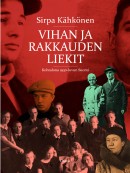 Vihan ja rakkauden liekit. Kohtalona 1930-luvun Suomi
Vihan ja rakkauden liekit. Kohtalona 1930-luvun Suomi
[Flames of love and hatred. Finland in the 1930s as destiny]
Helsinki: Otava, 2010. 287 p.
ISBN 978-951-1-24275-8
€ 32, hardback
In this non-fiction book, novelist Sirpa Kähkönen (born 1964) tells the story of her grandfather Lauri Tuomainen (1904–1971) in the context of Finnish politics of the 1920s and 30s. Tuomainen spent more than seven years in a labour camp at Tammisaari in south-western Finland, where Communist prisoners were sent after the Finnish Civil War of 1918. He was imprisoned in 1926 following his desertion from the Finnish Red Army officers’ academy in St Petersburg, and again in 1932 in the aftermath of planned public protests. The rise in political extremism and the worldwide economic depression made conditions in the prison camp extremely harsh. Kähkönen makes use of many archival sources in her descriptions of the hunger strike in the summer of 1933 and violence inflicted by the prison guards. In 1938 Tuomainen was released a broken man. One of the intriguing figures in this book is Mary Rhodes Moorhouse, from a wealthy British–New Zealand family, an enthusiastic supporter of the women’s rights movement and Communism; she married Eino Pekkala, a member of Finland’s left-wing political elite.
The naked truth
18 January 2011 | This 'n' that
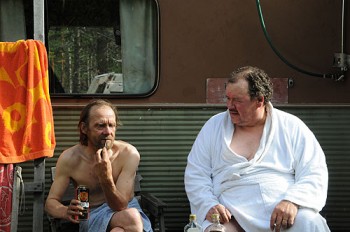
Out with the truth: sauna camaraderie in the film Steam of Life. Photo: Oktober
Finnish men don’t usually open up about much, it’s generally thought, as they don’t like to speak about feelings.
But in the sauna, it’s different. Intimacies are revealed in its soft steam, by men who sit there quietly and give voice to the sorrows of their lives.
In Miesten vuoro / Steam of Life, a full-length documentary film by two directors, Joonas Berghäll and Mika Hotakainen which premiered in March 2010, Finnish men both talk and weep. They have gained considerable popularity among audiences in Finland and abroad.
A naked guy sits on a wooden bench in the steam or outside the sauna building (which could be an old wooden hut in the countryside, a modern city sauna or some odd construction serving the purpose) with a bottle of beer in his hand, and tells the man sitting next to him in earnest about his dead child, new wife, or the death of his mother: the great sorrows or joys of his life.
Water, fire, bare skin and no ornaments: vulnerability. He can be a war veteran or a younger man, lonely or happily married. But he talks, cleansing himself both physically and mentally.
Steam of Life has so far been seen by approximately 50,000 people in Finland, and the DVD has sold more than 28,000 copies. It is the first Finnish documentary to compete for the Academy Award for Best Foreign Language Film. The Oscar nominees will be published on 25 January, with the award ceremony taking place at the end of February.
Steam of Life has won prizes both in Finland and abroad: in Tel Aviv, Warsaw, Pärnu in Estonia, Germany (DOK Leipzig where it won a Silver Dove) and Portugal. It received a Special Jury Mention at the Silverdocs documentary film festival in the United Sates and the Prize of the Interreligious Jury at the Visions du Réel festival in Switzerland. It will continue its tour of film festivals this year; see the trailer here.
The DOK Leipzig jury commented: ‘The film, deliberately set in an original Finnish situation – a sauna, opens a door into the intimate and hidden world of men’s fragility and vulnerability, turning the sauna into a place where naked truth is told by naked men. The film bends together tragic and comic….’
Mies ei puhu eikä pussaa is a saying; we’d translate this as ‘a Finn neither speaks nor snogs’, Finn referring to a male person. But the times, they are a-changing, it seems.
Dear Reader!
13 January 2011 | This 'n' that
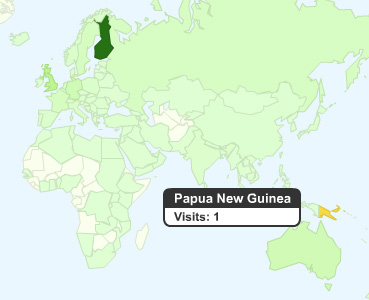
Reading Books from Finland here, there and... Photo: Google Analytics
2011 is well underway, and it’s back to business – reporting on good books from Finland, that is!
The new year also marks the beginning of our third year online: we are very pleased to note that last year visits to this site increased by 187 per cent compared to 2009!
Our foreign readers hail from a total of 149 countries, although the majority are in the United States and the United Kingdom – with a surprisingly large number of neighbourly visits from readers in Finland.
There are some countries where only one reader has taken a look at Books from Finland last year; greetings to our own readers in Honduras and Papua New Guinea…. But, on the other hand, readership in Belarus has grown by 2.400 per cent, from just one in 2009 to a grand total of 25!
We’ve been very glad to have your online feedback, which prompted us to think that since we haven’t done a reader survey for a longish time, we might take the opportunity to run another one now – so we’ll be quizzing you about your views of the contents of the journal on this page soon.
We hope to offer you more that is diverting, entertaining and thought-provoking this year than ever before. Remember, you can also keep abreast of what’s going on on the Books from Finland website by subscribing to our RSS and e-mail delivery services (and we’re on Facebook, too).
Happy new year, and good reading!
The editors
Soila Lehtonen (Helsinki)
Hildi Hawkins (London)
Out of the body
13 January 2011 | Reviews
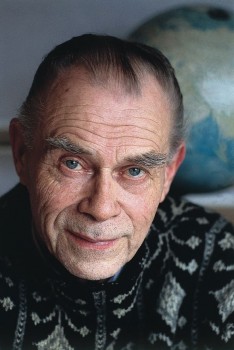
Veikko Huovinen. Photo: Irmeli Jung
‘Where will you be spending your eternity?’ ‘A spot of transmigration’, a short story by Veikko Huovinen (1927–2009), immediately confronts its main character, a man named Leevi Sytky, with this ultimate question.
Behind it is the sense of sin and fear of damnation typical of the religious life of northern Finland. Anyone who has made it as far as this final short story of Huovinen’s 1973 collection, Rasvamaksa (‘Fatty liver’) will, however, not make the mistake of taking the question too seriously; something diverting is clearly once again on offer.
Soon Leevi Sytky takes his leave of life in slightly sinful circumstances, but in the hereafter it turns out that these are not looked upon with disapproval. More…
